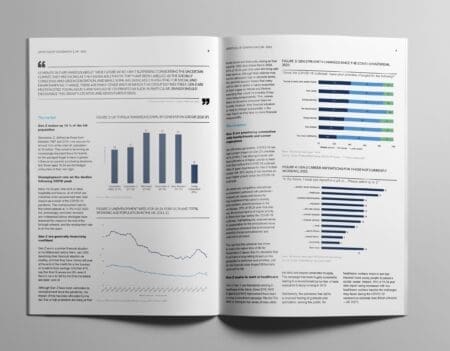So, you’ve graduated… and maybe even found your first job. Now you’re tasked with the very real struggle of paying back those student loans that racked up while you were busy getting your education. The total amount of student loan debt in the US is a staggering — $1.2 trillion, higher than credit card and auto loan debt. According to Mintel’s recent Educational Lending — US, 2014 report, the sheer size of that debt may be enough to challenge US economic growth in the immediate future.
Mintel research finds that 47% of people aged 18+ have student loans. Some 16% have loans of $10K-$50k and another 11% have loans of $50K-$100K. This results in some 30% of people who have monthly loan payments greater than $300, while 5% have monthly payments greater than $1,000. Of those who have loans outstanding, 42% say it is a financial hardship to pay them back.
47% of people aged 18+ have student loans. Some 16% have loans of $10K-$50k and another 11% have loans of $50K-$100K
Record debt has multi-generational effects
High levels of debt affect not only the financial stability of young people immediately upon graduating, but have long-term effects as well. An August 2013 report from think tank Demos found that a two-income couple with bachelor’s degrees from a 4-year university has an average debt of $53,000. This translates to a wealth loss of nearly $208,000 over the course of a lifetime. Since much of this comes from their retirement savings, the debt is challenging the couple’s retirement stability as well as their immediate financial life.
Additionally, young people aren’t the only ones bearing the brunt of the student debt crisis; their parents and grandparents are paying for it too. According to the Federal Reserve Bank of New York, almost 17% of outstanding student loan debt is held by people over age 50. The average loan balance for those aged 50-59 is $23,183, while that of people aged 60-69 is $19,225. In addition, a 2014 report from the GAO (Government Accounting Office) found that the outstanding federal student loan balances of people aged 65+ grew from $2.8 billion in 2005 to $18.2 billion in 2013. The challenge for parents and grandparents is not only paying off balances of loans they took themselves, but also those they co-signed for their children and grandchildren.
Financial advisers have an opportunity to step in and help families plan their college saving strategies early in a child’s life, so paying for college can be more easily managed.
Robyn Kaiserman does research and analysis and writes in-depth reports for use by clients in and associated with the financial services industry. Her most recent topics include Innovations in Banking and Payments.





































